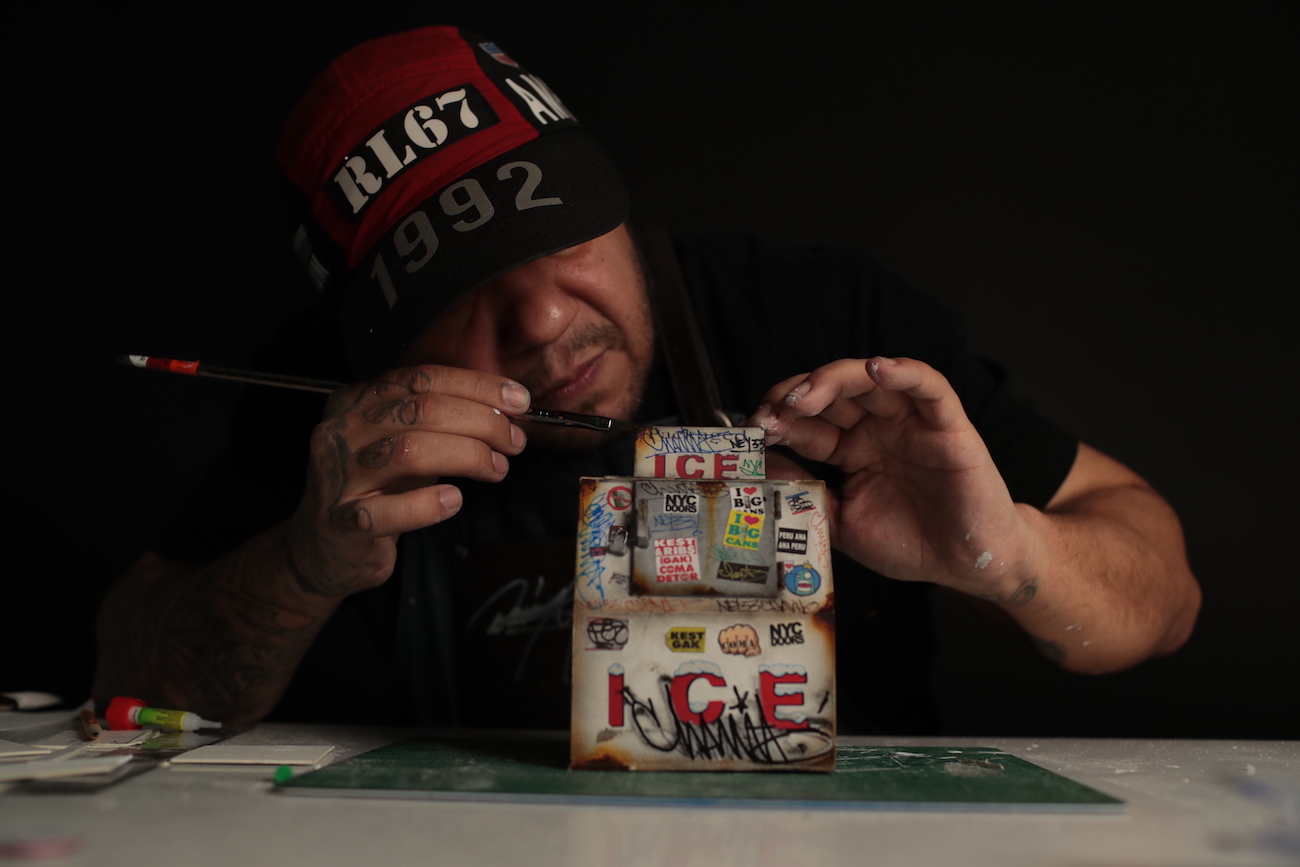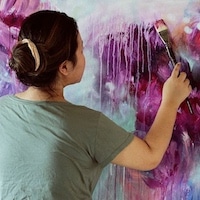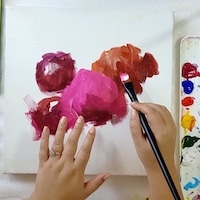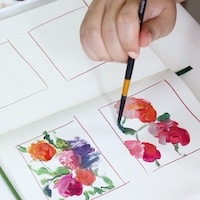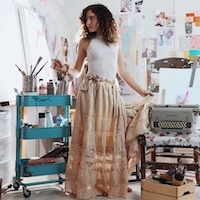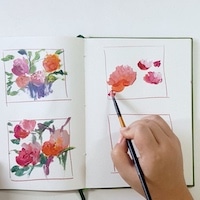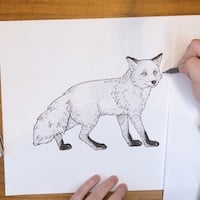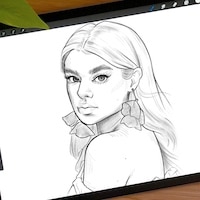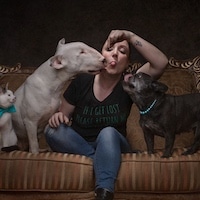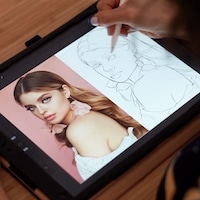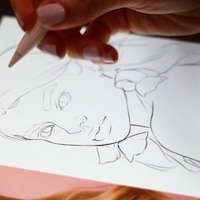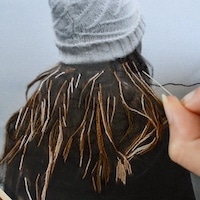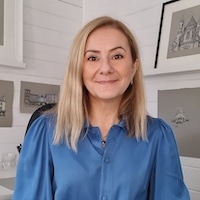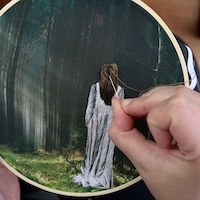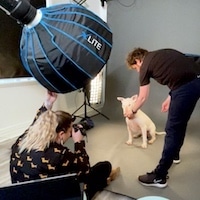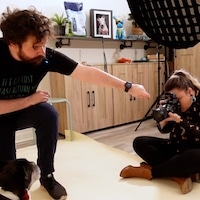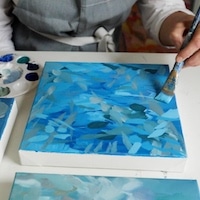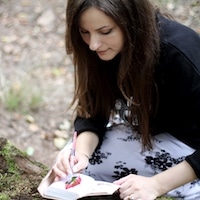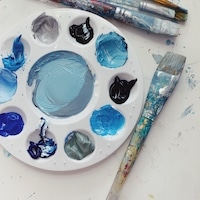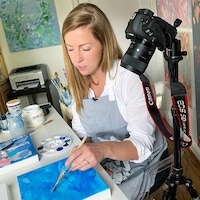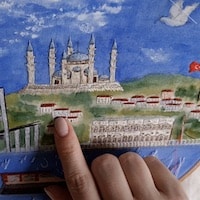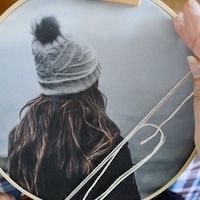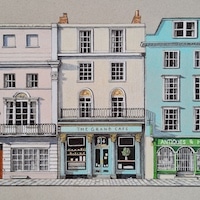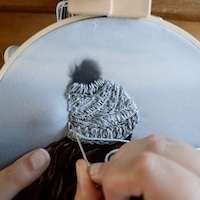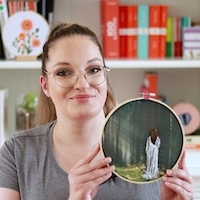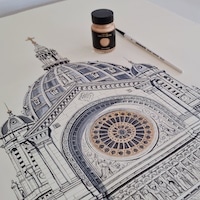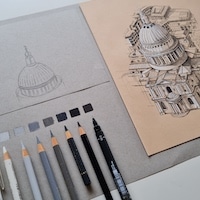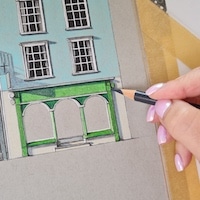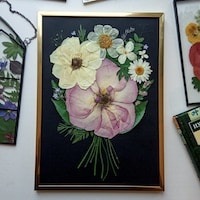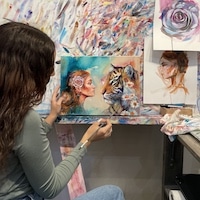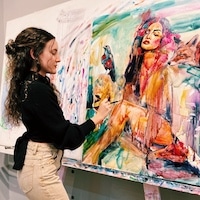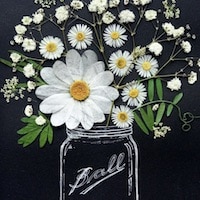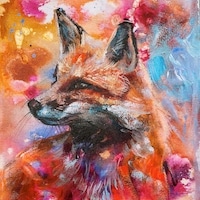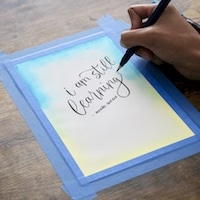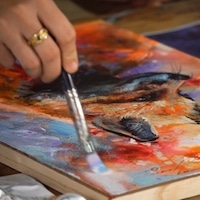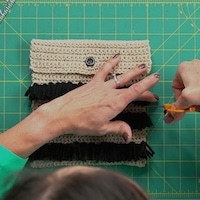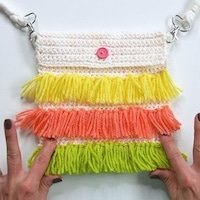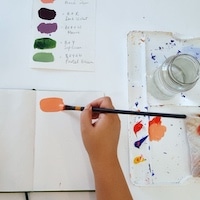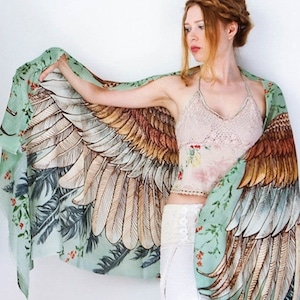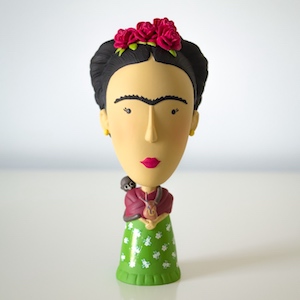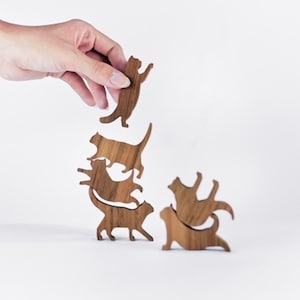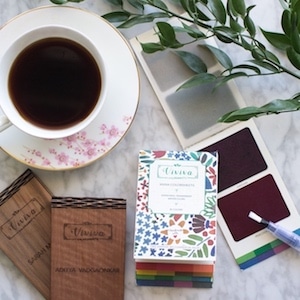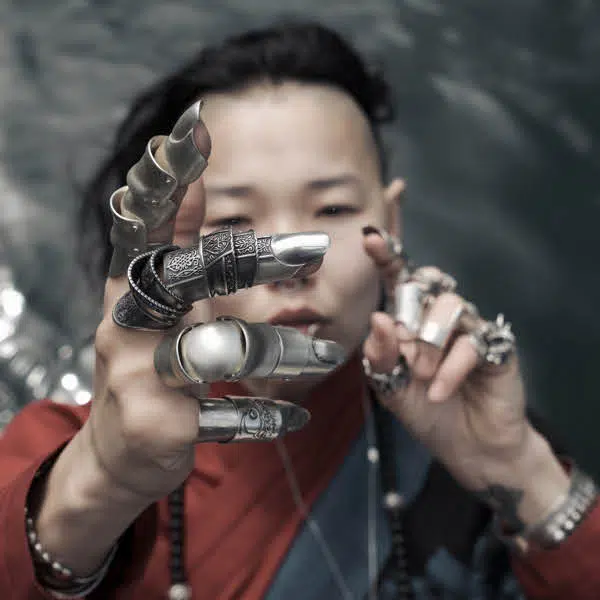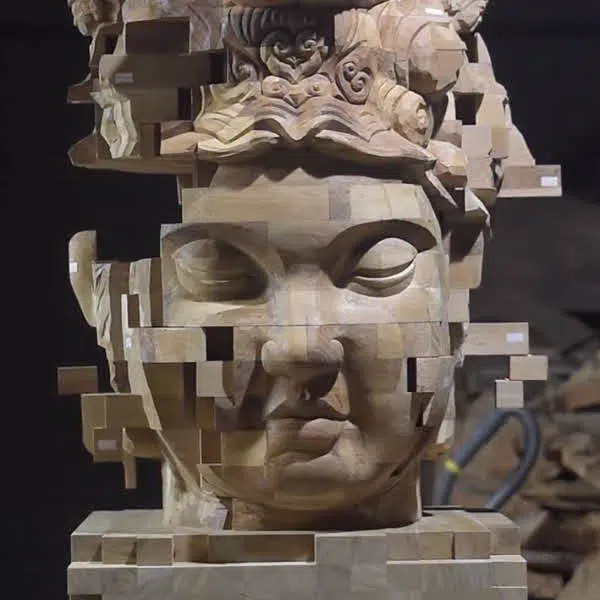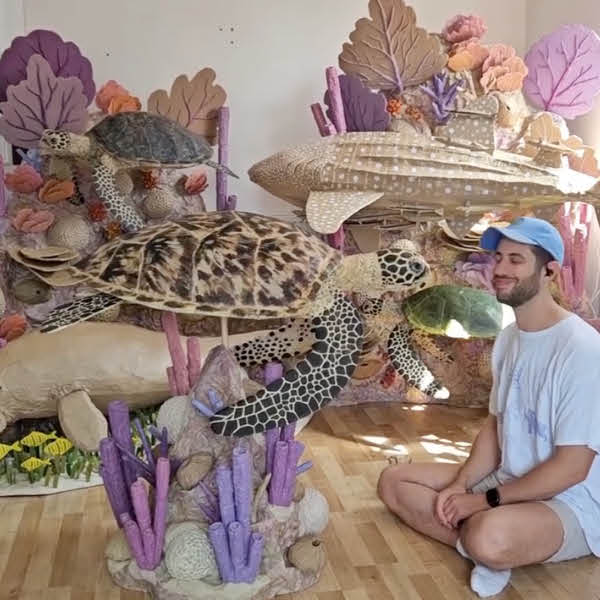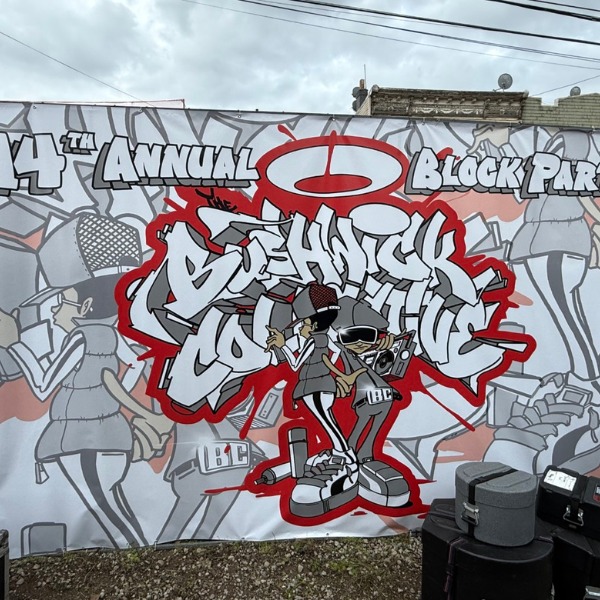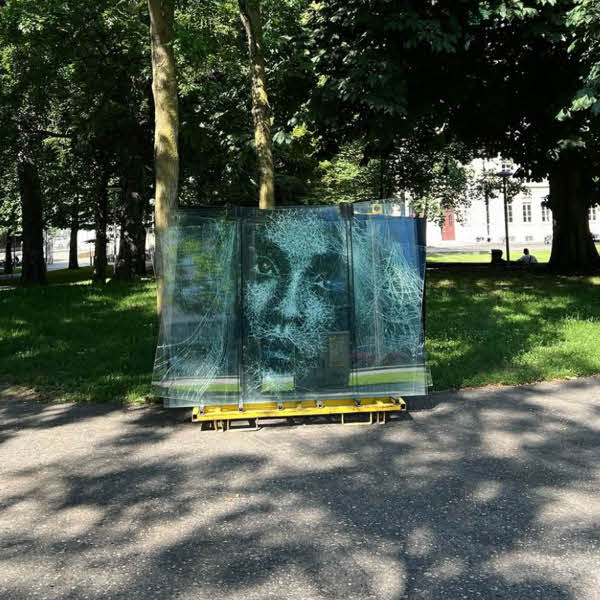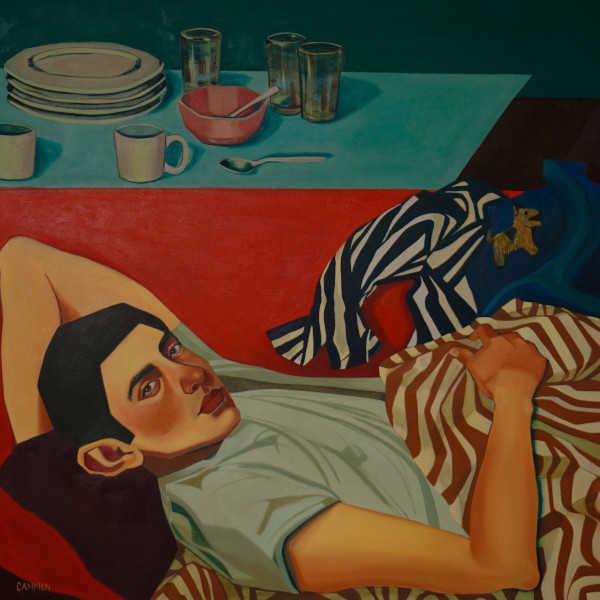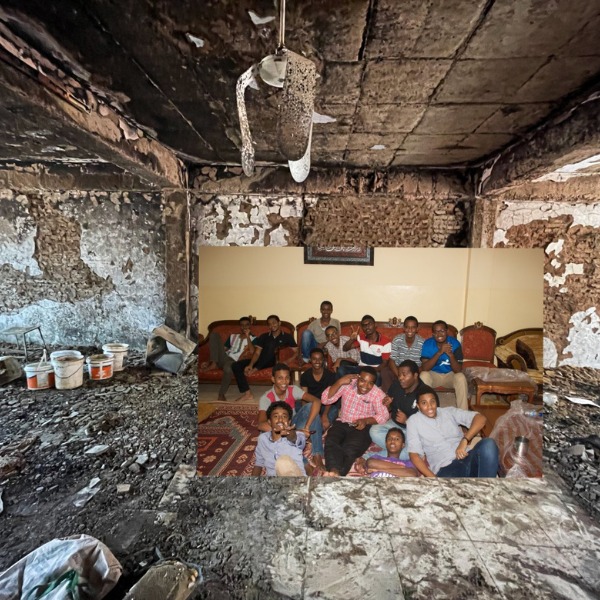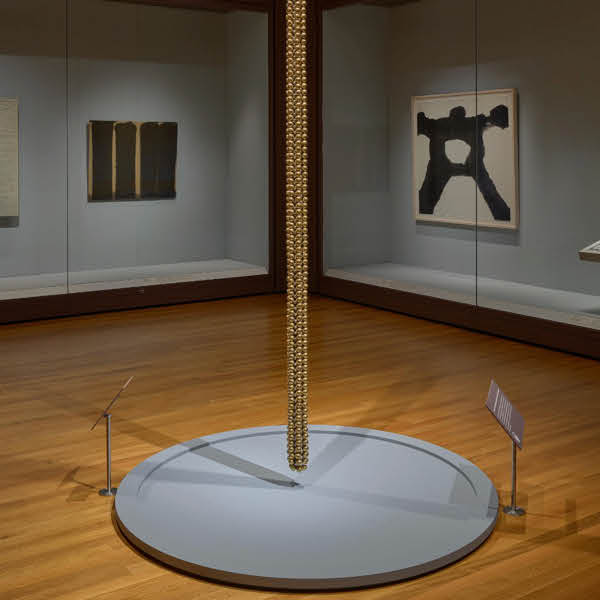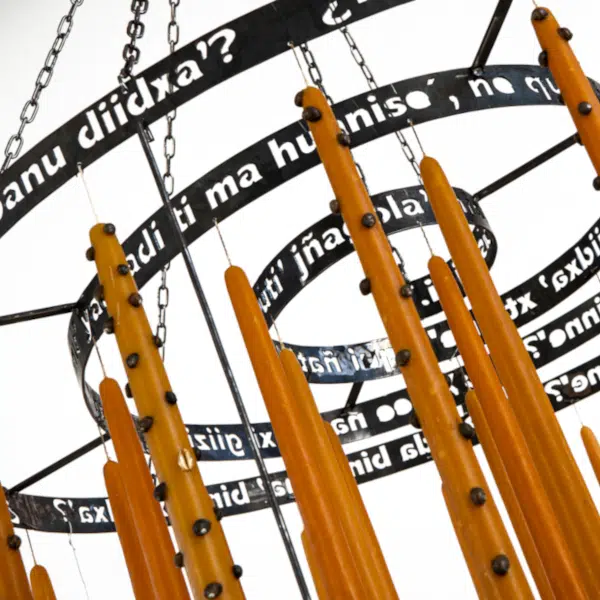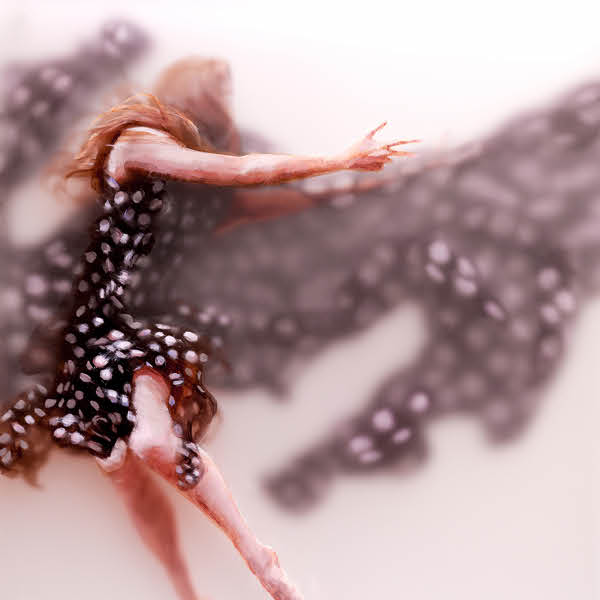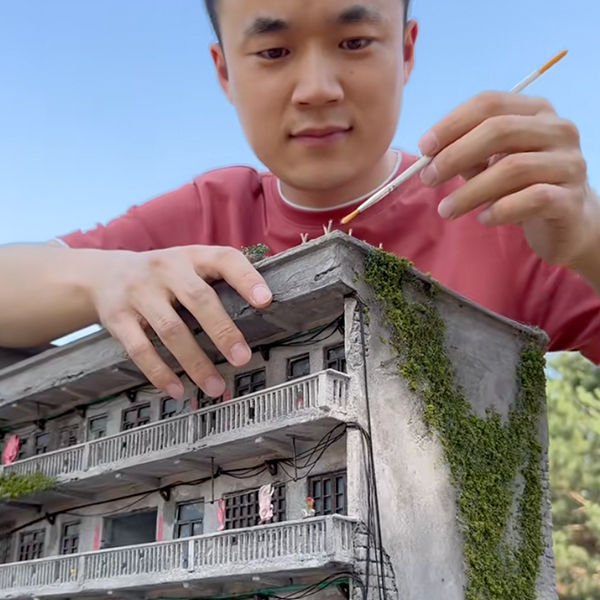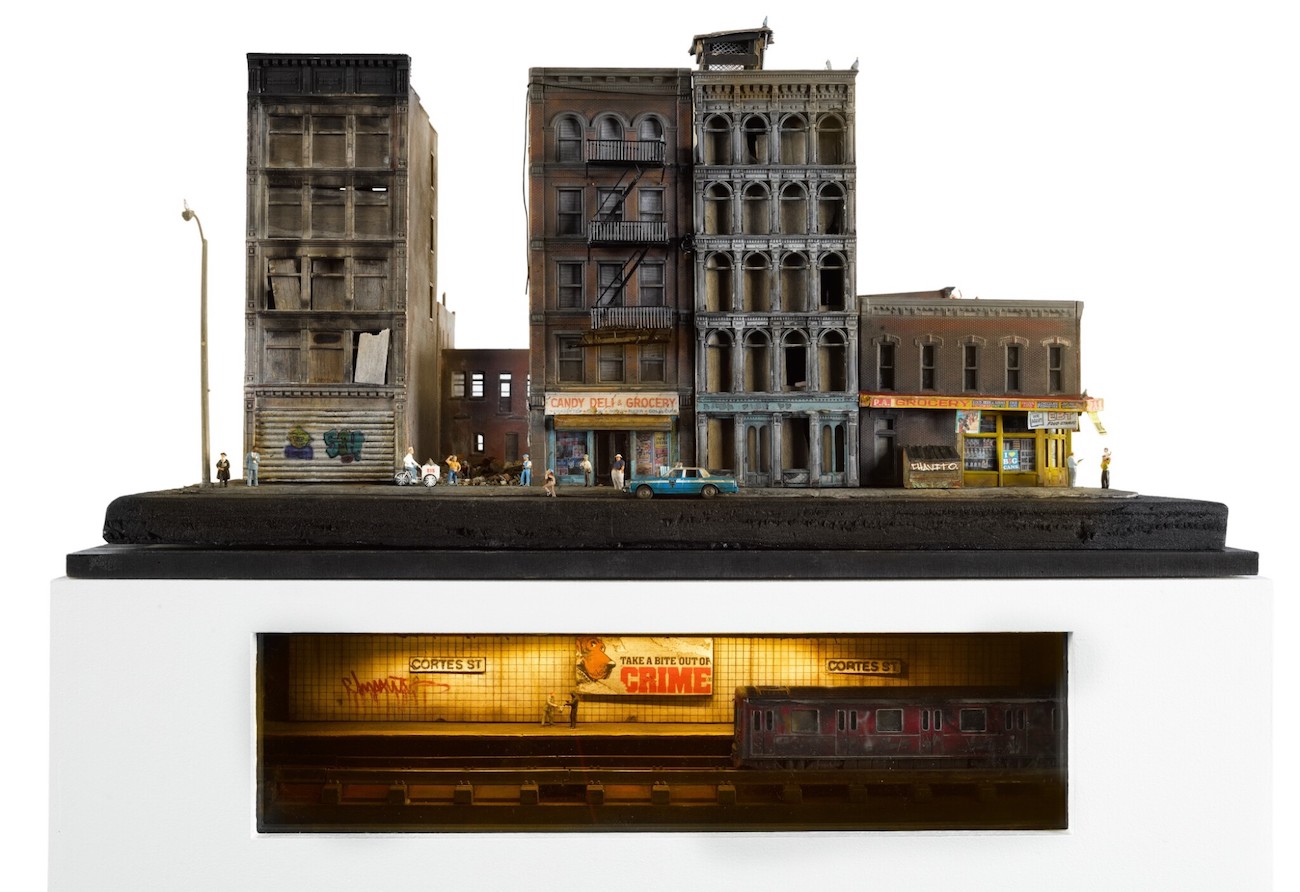
“The Block,” 2023.
There are countless ways to describe New York, but Danny Cortes typically veers toward words like “fast,” “layered,” “gritty,” and even a “little messy.” For the Brooklyn-based artist, though, “authentic” is perhaps the most important descriptor for the city in which he was born and raised. By design, it also happens to be the guiding principle behind his work.
Once a pandemic pastime, and now the basis of his creative practice, miniature modeling has allowed Cortes to capture what he calls the “very essence and soul” of New York. These models encompass everything from city streets lined with classic five-story walk-ups and storefronts to ice machines splattered with graffiti and stickers. Regardless of what they depict, Cortes’ urban scenes embody the singular character of a city that has shifted under the weight of gentrification across the past few decades. Few neighborhoods exemplify this evolution better than Bushwick, where Cortes has lived throughout most of his life.
“Bushwick raised me—it was raw, loud, and full of culture,” Cortes tells My Modern Met. “Now, it’s changing fast. A lot of what I knew growing up is gone.”
How, then, can we preserve the memory of a specific place, particularly when the city’s rapid pace constantly revises what we once knew? Cortes’ solution—miniature models—offers settings that are unquestionably frozen in time, showcasing a past that, despite it all, is still embedded in the fabric of New York.
“[My models] preserve moments in history, snapshots of communities, cultures, and everyday life that risk being forgotten or erased, especially in rapidly changing places like Brooklyn,” Cortes adds. “In this way, my models become more than just representations—they serve as vessels of memory and cultural preservation.”
My Modern Met had the chance to speak with Danny Cortes about his artistic process, the importance of his work as it relates to cultural memory, and his relationship to Brooklyn. Read on for our exclusive interview with the artist.
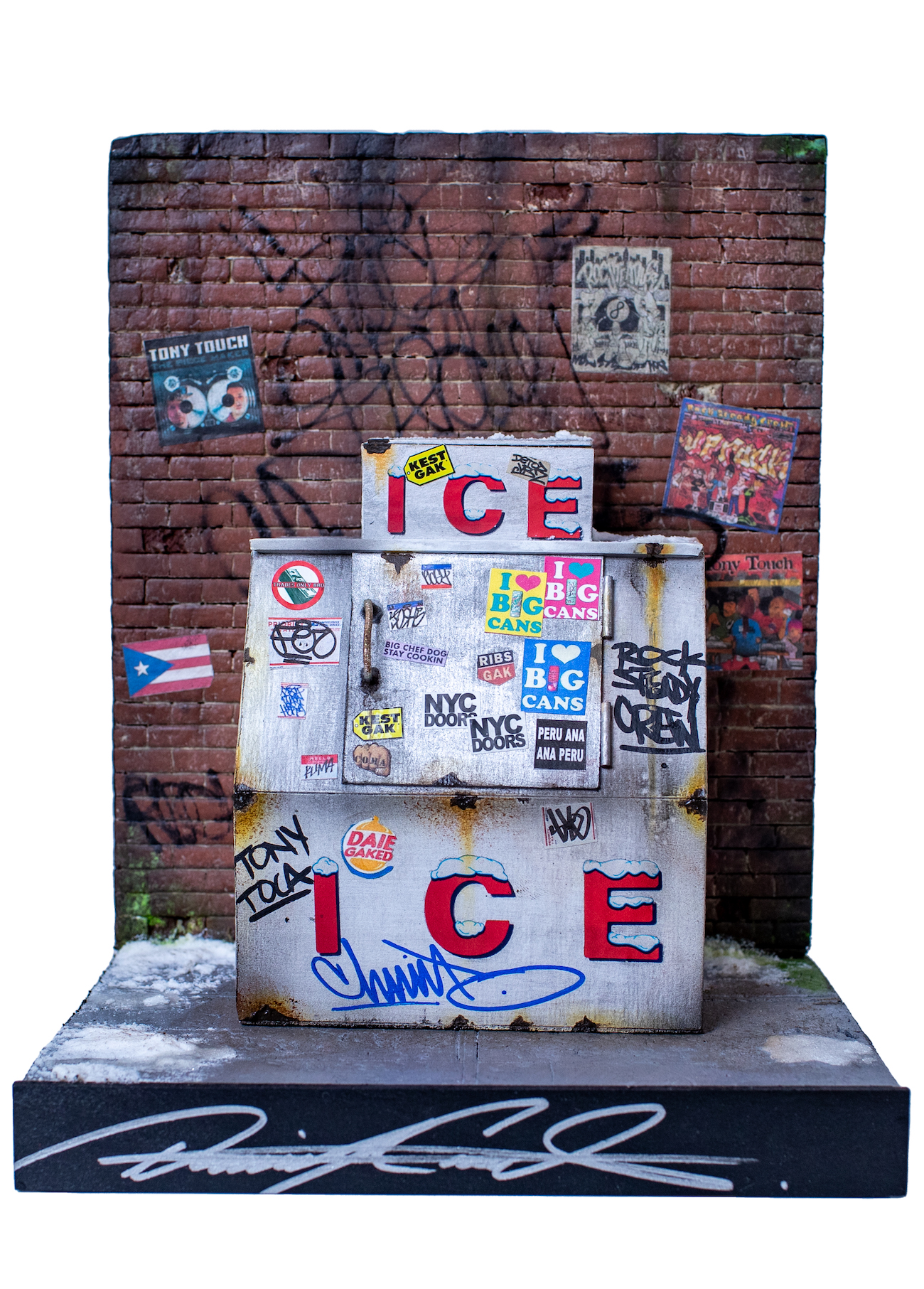 What originally compelled you about miniature models?
What originally compelled you about miniature models?
I originally took up miniature modeling as a pandemic pastime, but soon a voice told me this was my true calling. What drew me in was the intimate process of recreating spaces on a small scale. It’s not just about achieving visual accuracy; it’s about capturing the very essence and soul of a place.
Growing up in Brooklyn, I was surrounded by neighborhoods full of life, stories, and constant change. Miniatures give me the chance to slow down and notice the details that often go overlooked, allowing me to connect more deeply with the environments that shaped my experiences. This artistic process lets me explore my memories and identity growing up in New York City in a uniquely personal way. After all, every building in this city began as a small drawing before becoming the structure we know today. I’m simply recapturing its uniqueness and spirit through my work.
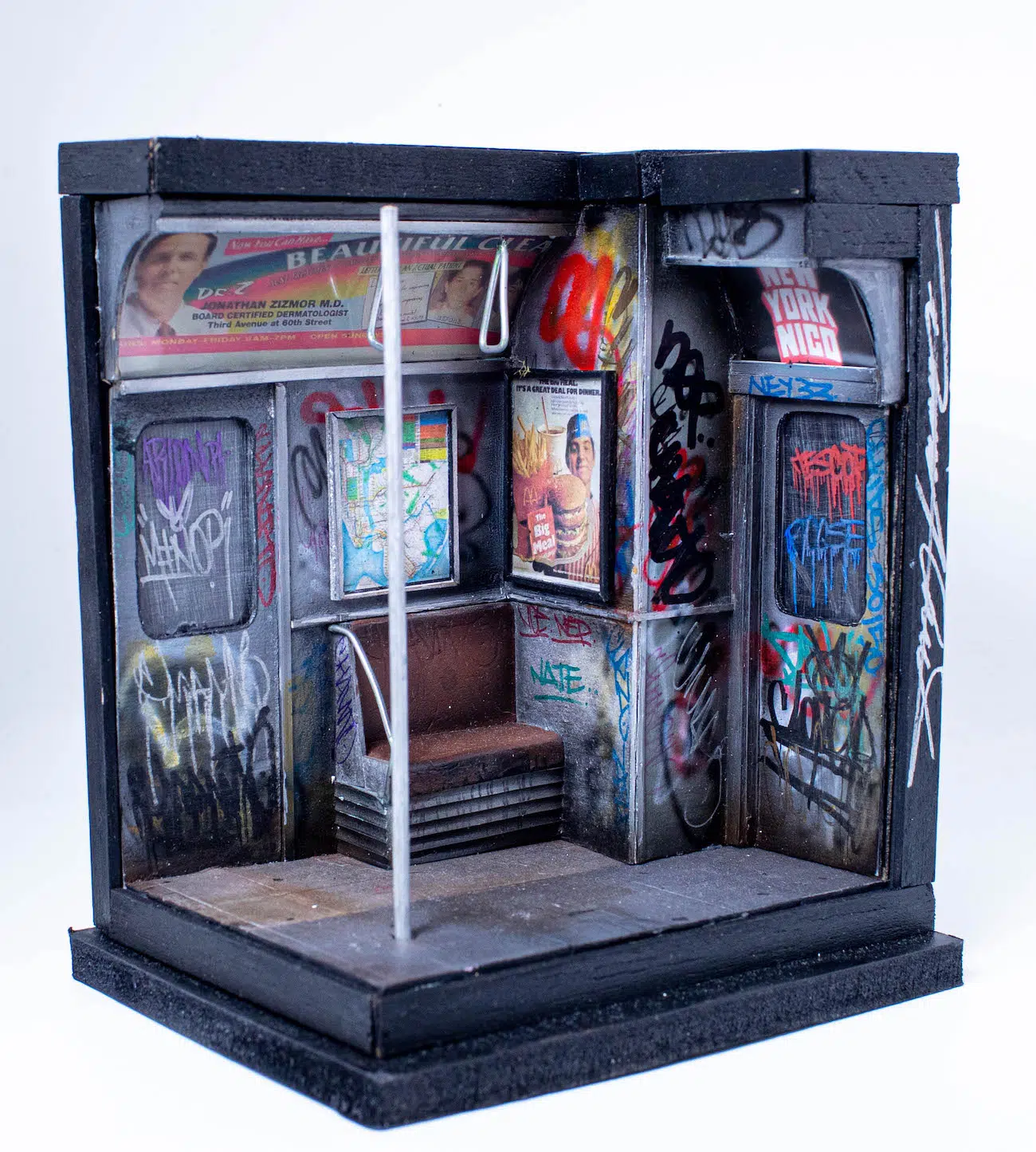
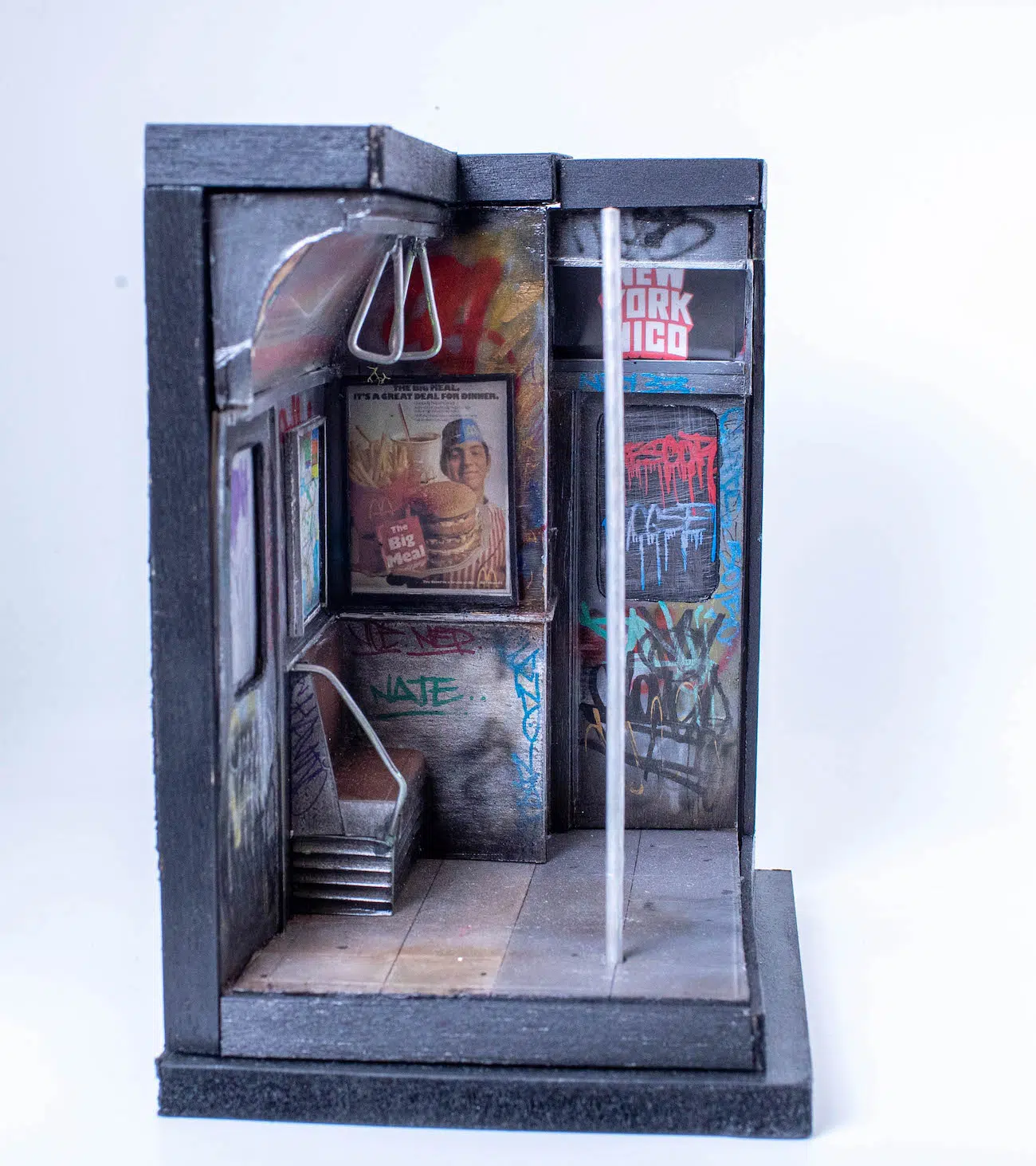
What is the process of creating one of your models, and what materials do you use most frequently?
Many of my pieces incorporate recycled materials, making my work unintentionally environmentally conscious. I’m naturally drawn to what’s available and adaptable. My creative process starts the moment I step outside and observe the world around me. I mentally map out a grid of the environment, seeing buildings, streets, and objects through a fresh perspective.
While others might find a building too large or complex to replicate, I immediately begin imagining how to recreate it on a smaller scale using everyday materials. For example, kebab skewers, straws, and other simple objects help me mimic architectural details. I often use wood, metal, and wire to bring my miniatures to life, but each piece is truly unique.
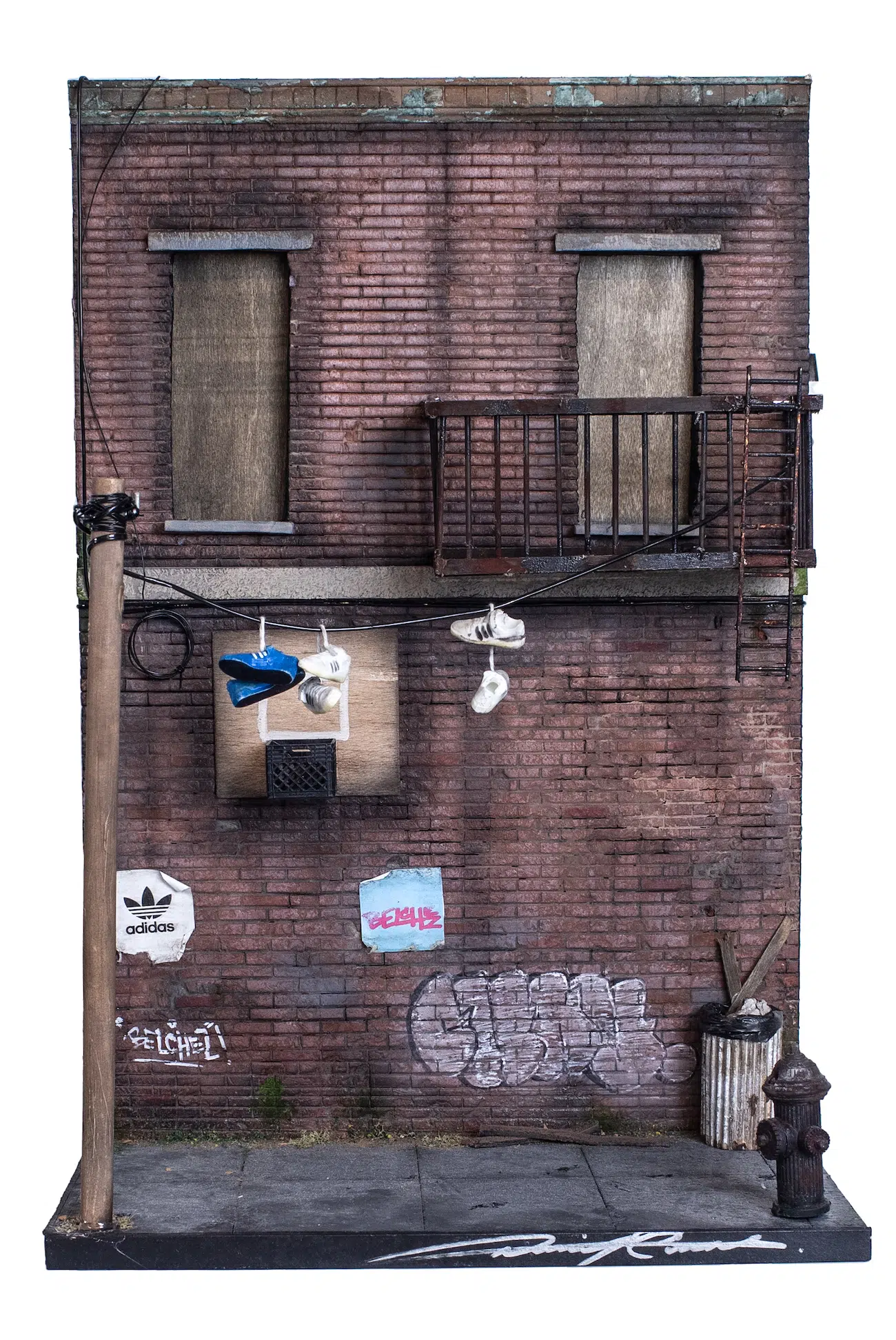 How has your upbringing in New York influenced your practice, and how do you imbue the city’s character throughout your work?
How has your upbringing in New York influenced your practice, and how do you imbue the city’s character throughout your work?
Growing up in New York taught me how to navigate the chaos, noise, and constant motion of the city with creativity. The city raised me with its grit and glamour, its noise and stillness, its decay and growth. Those dualities have deeply shaped how I create my art. I didn’t grow up with formal training, but I had the streets, the storefronts, the stoops, the handwritten signs, and the energy of people always reinventing themselves.
In my work, I aim to capture the raw personality of the city, not the polished version you see in movies or tourist shops, but the layered, imperfect, and authentic one. I focus on hand-painted signs, crooked awnings, cluttered shop windows, the kinds of details that speak louder than any skyline. My miniatures don’t just represent New York visually; they embody their raw emotions. Fast, loud, layered, a little messy, and always full of character.
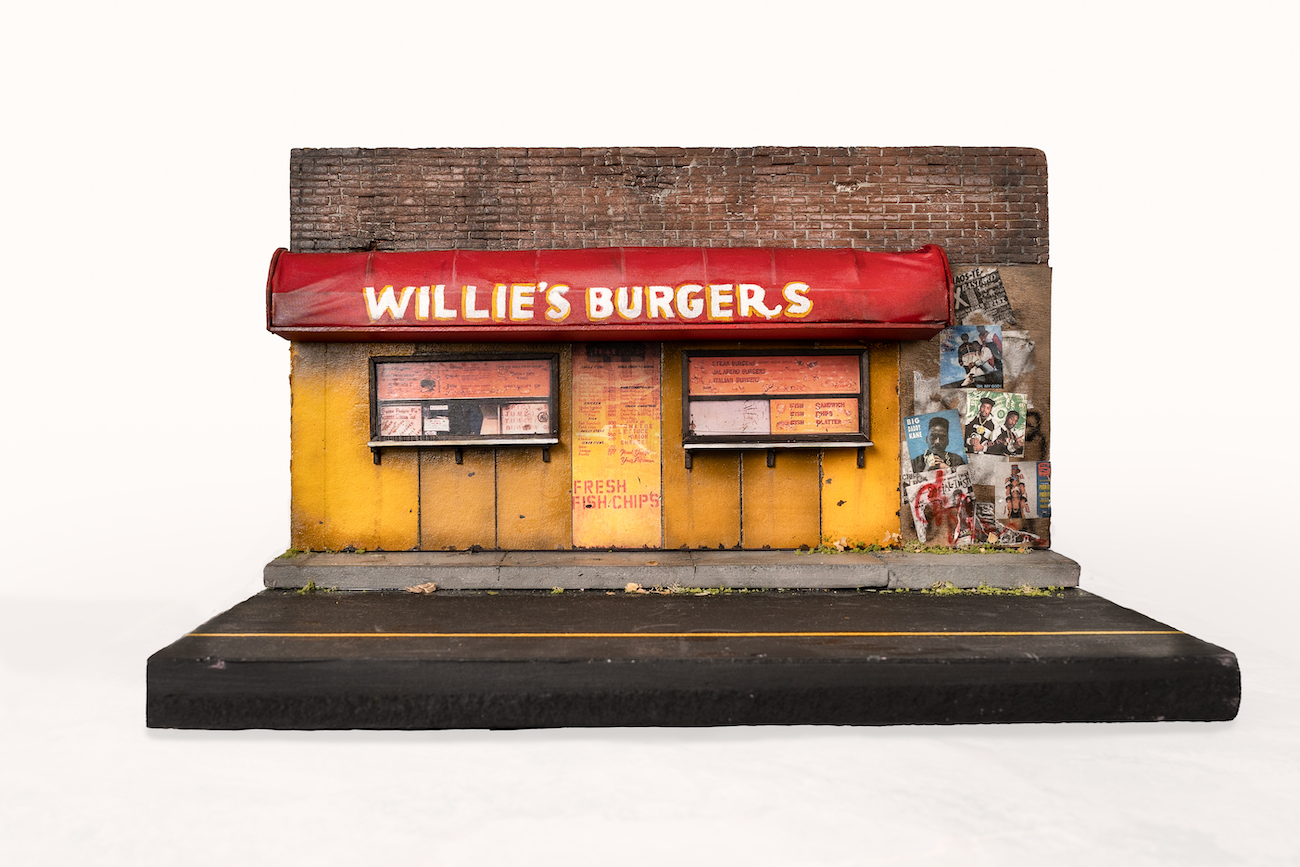 What role does site specificity play throughout your art, and how important, if at all, is it for you to reimagine New York cityscapes with precision?
What role does site specificity play throughout your art, and how important, if at all, is it for you to reimagine New York cityscapes with precision?
Every time I walk through the city, whether it’s on my daily walks in the Lower East Side, heading to my studio in Williamsburg, or just moving through different neighborhoods, something always catches my eye. It could be something as simple as an old ATM covered in stickers and graffiti; but to me, that’s part of the city’s visual language and identity.
Site specificity plays a huge role in my work. I take what I see and filter it through my own imagination, creating a version of New York that’s shaped by personal memory and artistic freedom. I don’t aim for strict precision; I aim for authenticity. My models reflect the grit, energy, and personality of the city.
I include elements like graffiti, weathering, and tags, using my own visual rules. For instance, I once made a miniature version of the iconic Mr. Softee truck and added my own stamp to it. Even my bodegas and corner stores often reference the 1990s, inspired by the ones I grew up around, but I reimagine them as something uniquely mine, like “Cortes Grocery.”
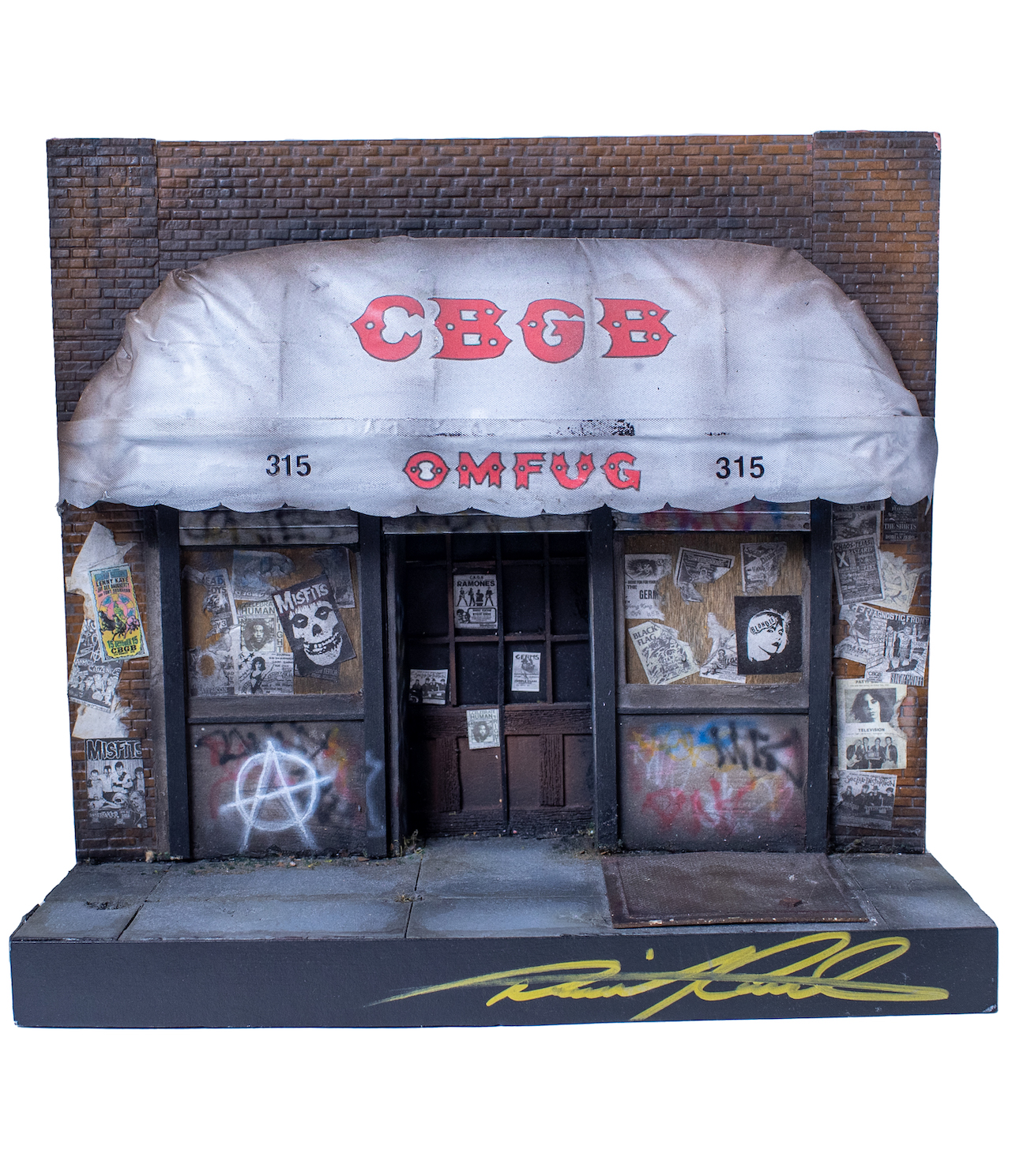
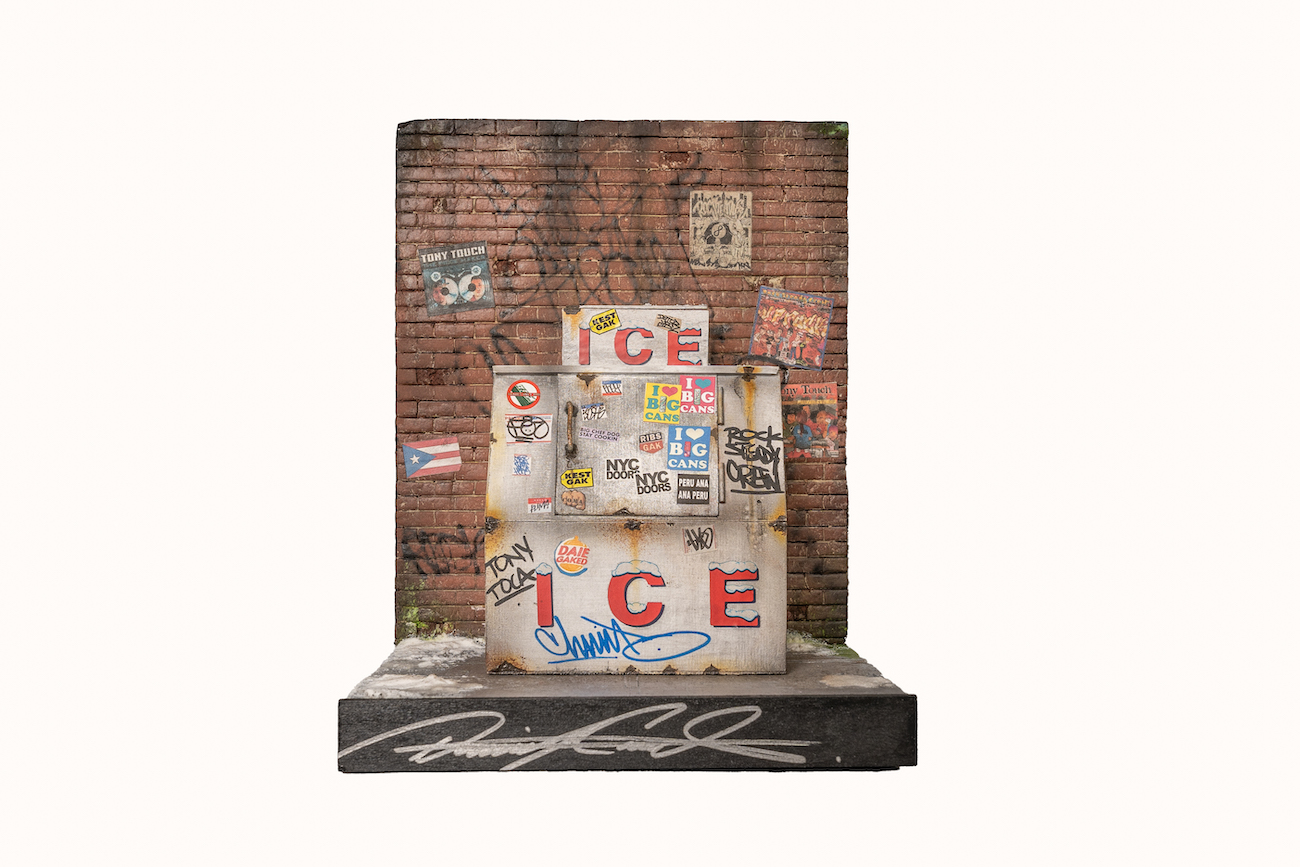 Your models have previously been called “time capsules.” Do you find this to be an accurate assessment of your art?
Your models have previously been called “time capsules.” Do you find this to be an accurate assessment of your art?
Yes, I believe “time capsules” is a powerful way to describe my models. They preserve moments in history, snapshots of communities, cultures, and everyday life that risk being forgotten or erased, especially in rapidly changing places like Brooklyn, where many neighborhoods have undergone profound gentrification over the past 30 years.
Each miniature I create tells a story, capturing not only the physical environment but also the deep emotional connections tied to it. In this way, my models become more than just representations, they serve as vessels of memory and cultural preservation.
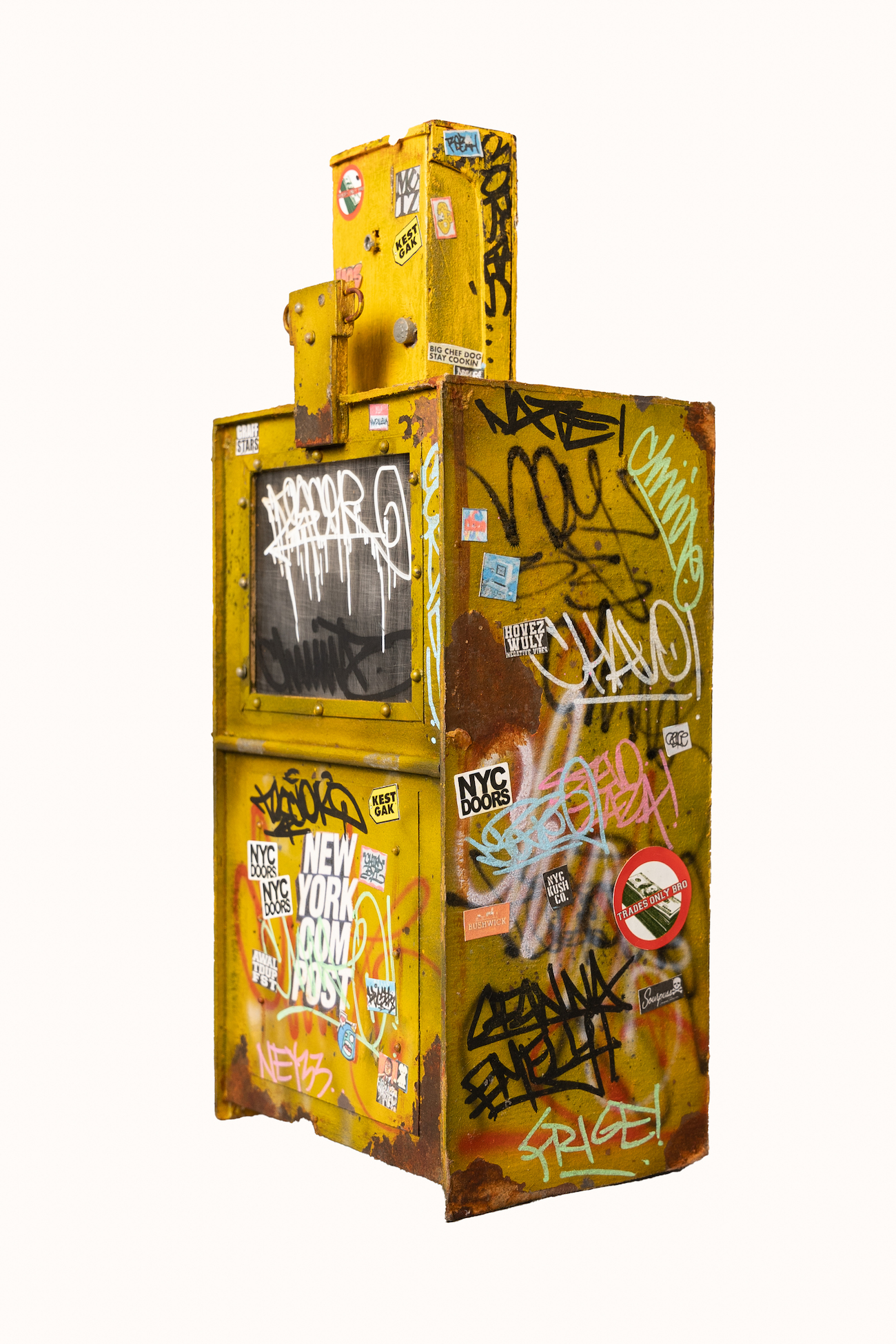 Bushwick has undergone tremendous changes since the ’80s and ’90s. How has that evolution impacted your art, and your relationship with the neighborhood?
Bushwick has undergone tremendous changes since the ’80s and ’90s. How has that evolution impacted your art, and your relationship with the neighborhood?
Bushwick raised me—it was raw, loud, and full of culture. Now, it’s changing fast. A lot of what I knew growing up is gone. That’s why I try to preserve it through my work to honor where I come from and show people the soul that’s still there.
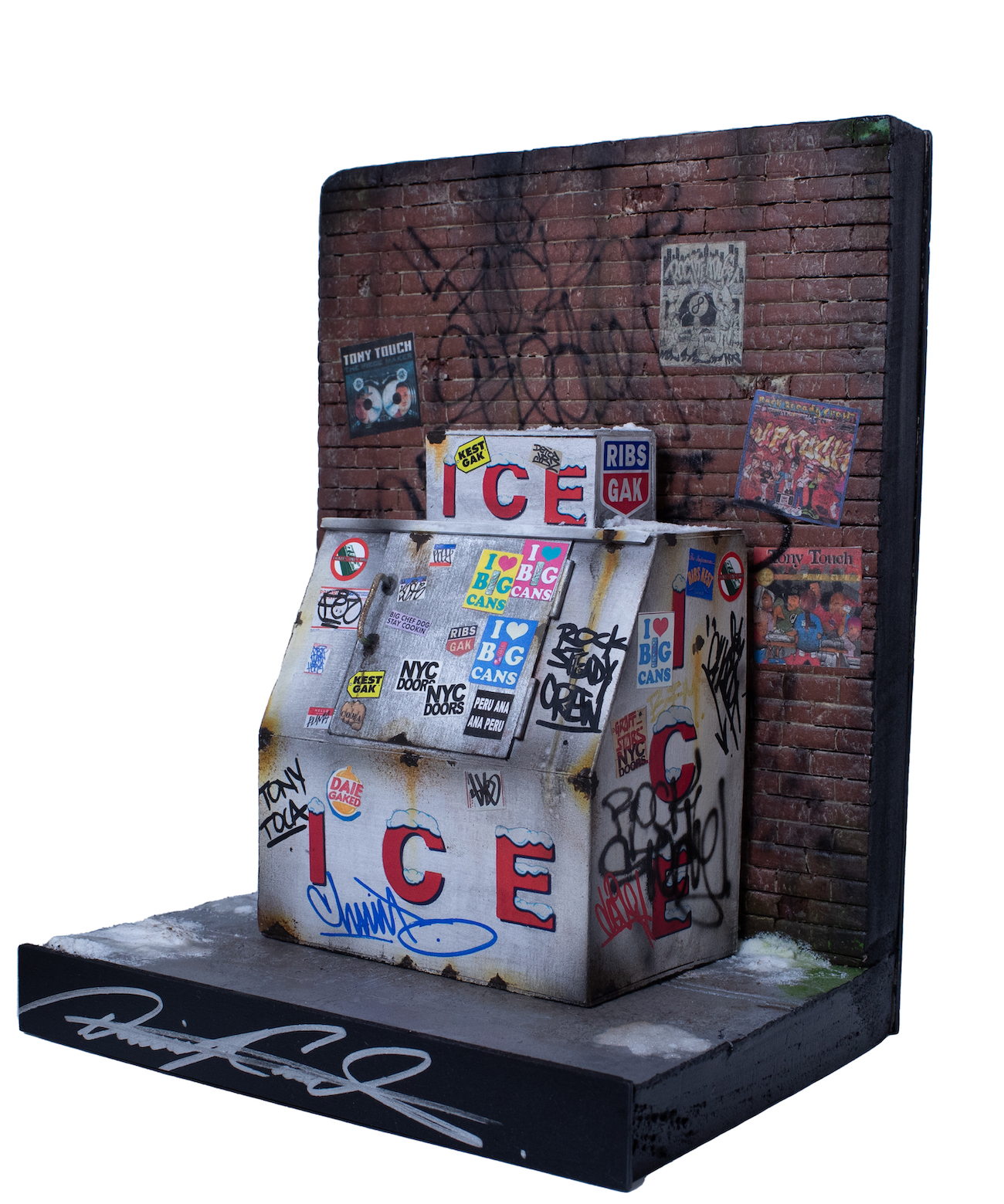
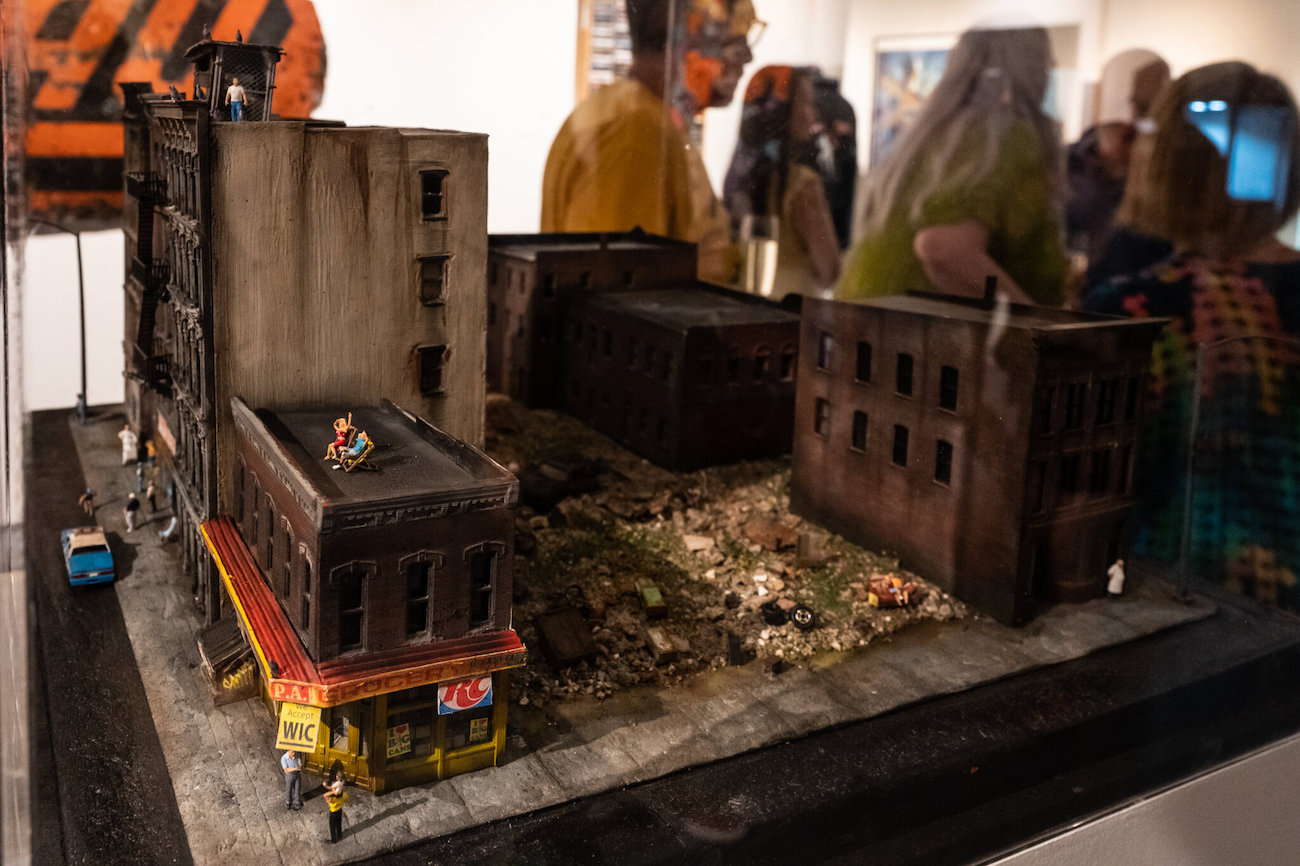
“The Block” during an auction at Sotheby’s. (Photo: Gabriele Holtermann)
What do you hope people will take away from your work?
I want people to walk away with a sense of curiosity and playfulness, like they’re seeing the city through a different lens. My work isn’t just about nostalgia or preservation; it’s also about imagination and possibility. By shrinking the scale of something as massive and chaotic as New York, I hope to make it feel more personal, approachable, and even a bit surreal.
I hope it encourages people to pause and really look at their surroundings. To notice how the city functions not just as a physical space, but as a living, breathing organism filled with emotion, history, and constant transformation.
Danny Cortes: Website | Instagram
